=================================================================
To subscribe, unsubscribe or change your email address, visit:
http://www.imaging-resource.com/IRNEWS/index-subs.html
Support the Newsletter!
- Find the best price for anything at http://ir.pricegrabber.com
- Shop Amazon, Adorama at http://www.imaging-resource.com/buynow.htm
=====================================================
THE IMAGING RESOURCE DIGITAL PHOTOGRAPHY NEWSLETTER
=====================================================
Volume 15, Number 26 - 6 December 2013
----------------------------------------------------------------------
Copyright 2013, The Imaging Resource. All rights reserved.
----------------------------------------------------------------------
Welcome to the 374th edition of The Imaging Resource Newsletter. In this issue, we dive head first into the tiny, but powerful Panasonic GM1 with the Part I installment of our Shooter's Report. We're changing things up a bit with our review process for this camera, so let us know what you think of it! Rather than posting a full review in one huge chunk at the end of our often-lengthy review process, we're going to get the conversation started a lot earlier, with multiple, shorter installments of our Shooter's Report. This will let our readers get an initial impression of how the camera performs and what it's like to use, as well as any standout feature or issues the reviewer might encounter, right up front. It will also give our readers an opportunity to have a dialog with the reviewer while he/she is actually working with the camera. Have any questions about the camera or things you would like to see covered in the review? Let us know in the discussion box at the bottom of the GM1's review page!
Also in this week's issue is a fascinating story from Steve Meltzer about the increasing popularity and value of old, anonymous photographs. We also sit down with Kimio Maki, the senior general manager of the Digital Imaging Business Group at Sony Corp., for a discussion about the development and success of many of Sony's hot new cameras. On the review front, we've posted our reviews of the (amazing!) Sony RX10 and Nikon D610 as also share some thoughts from our senior lab technician Luke Smith on the new Nikon DF.
Finally, former Managing Editor Roger Slavens has moved on to other opportunities, in which we wish him all the best. Going forward, you'll be hearing from all the members of the IR editorial team.
Happy reading!
TOPICS
----------
Get Social with IR
Sponsors
Camera Review: Panasonic GM1Shooter's Report, Part I - great camera, shockingly small
Feature: Anonymous Photographs�the Treasures in the Attic by Steve Meltzer
Quick Hits: Interview with Sony's Kimio Maki and Mark Weir, Sony RX10 Shooter's Report, Nikon D610 Shooter's Report, Labmaster Luke's take on the Nikon DF (plus our first shots!)
New on the Site
Next Issue
Signoff
GET SOCIAL WITH IR
---------------------------
If you want to stay up-to-date with the latest camera and photography news, get notified when IR posts its latest camera or lens review, and much more, please get social with us on your favorite networking sites by:
By doing so, you'll also be supporting our efforts to deliver the best camera and photography content on the planet. (Google in particular apparently pays lots of attention to Google+ in deciding site/page relevance for its search results, so "circling" us there and +1-ing our site and pages would be an especially big help.) Thanks! We appreciate it!
SPONSORS
--------------
This issue is sponsored in part by the following companies. Please show your appreciation by visiting the links below. (Visiting our sponsor's links really helps support this newsletter, thank you for your attention!) And now a word from our sponsors:
* Olympus *
Introducing a camera as revolutionary as you are.
The Olympus OM-D E-M1
Take incredible images anywhere you go.
Move into a new world
Re-imagined
Redesigned
Revolutionized
See for yourself: http://www.imaging-resource.com/cgi-bin/nl/pl.cgi?olyfz1
* Sigma *
Sigma's new Global Vision lenses feature the latest technology
and combine optical performance resulting in a tour de force
that meets all of your photographic needs.
Our new lenses include the new
35mm F1.4 DG HSM 'Art',
17-70mm F2.8-4 DC Macro OS HSM 'Contemporary' and
120-300mm F2.8 DG OS HSM 'Sport'.
Our cameras, featuring the Foveon X3 sensor, include the SD1 and the
DP Merrill, produce the highest quality digital images.
Learn more about Sigma offerings at http://www.imaging-resource.com/cgi-bin/nl/pl.cgi?sg13
-----------------------------------------------------------------------------------------------------
Are you in the digital photo business? This newsletter is read by more than 47,000 direct subscribers (plus additional pass-along readers), all with a passion for digital photography. For information on how you can reach them, contact us at editor@imaging-resource.com.
-----------------------------------------------------------------------------------------------------
REVIEW: Panasonic GM1 First Hands-on Report: Shooter's Report, Part I
-----------
(Check out the new review style we're trying out with our Shooter's Report, Part I -- an initial take on this tiny yet powerful new camera from Panasonic -- plus a first batch of gallery photos: http://www.imaging-resource.com/PRODS/panasonic-gm1/panasonic-gm1A.HTM#SR)
by William Brawley
Part I - Initial Thoughts
Posted: 12/5/2013
 |
The Micro Four Thirds sensor is able to capture a lot of fine detail, and the AF on the GM1 is quick to capture active subjects. (12mm, f/5, 1/1000s, ISO 200) |
If you've read any of my other reviews of the Nikon D7100, Canon 70D or Nikon D610, it's pretty obvious that I'm a DSLR guy for the most part. That kind of camera has been my preferred style for a long time. However, I recently experimented with the Canon EOS M -- being a Canon guy and all with a variety of EF lenses -- and just as many others have experienced, shooting with the EOS M is a little frustrating: slow AF, poor battery life, no EVF attachment and limited lens choices (without an adapter). The ima
ge quality was nothing to sneer at, but I was still left wanting in some ways.
I've taken on the task of our Panasonic GM1 review, and I can say, boy, this is the camera I wish I had bought instead of the EOS M! I've only recently begun my review process with this camera and have only shot with it for about a week, but I thought this would be a good opportunity to share some of my initial impressions -- both positives and negatives -- as well as a first set of gallery images. So, without further ado, let's hit the positives!
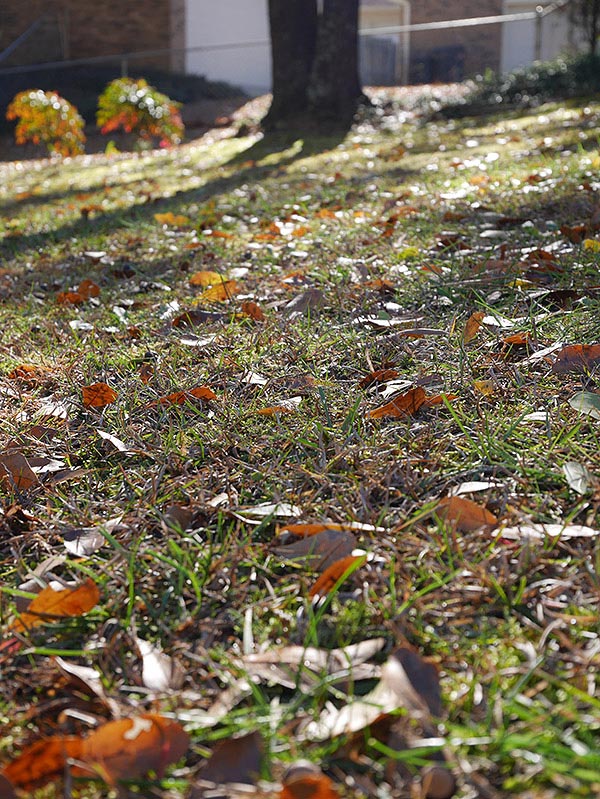 |
(28mm, f/5.4, 1/250s, ISO 200) |
Size. This thing is tiny! I thought the Canon EOS M was small, but the Panasonic GM1 feels like a point-and-shoot camera in terms of weight and slimness, but with the added flexibility of interchangeable lenses and a larger sensor. Plus, thanks to the all-magnesium body construction, durability is surely increased over typical all-plastic point-and-shoots. The GM1 feels strong, light and sturdy, and the compact 12-32mm lens makes it a go-anywhere camera. I could easily slip this guy into a jacket pocket or a larger pants pocket, like those on cargo pants (still a little on the wider side for smaller jeans pocket, for instance).
The Panasonic GM1 that I'm testing also came with the optional screw-on baseplate grip attachment, which is a fantastic accessory, and something I wish desperately was available for my EOS M. I found the 12-32mm kit lens to be small and light enough that using the grip wasn't necessary. And thanks to the standard Micro Four Thirds mount, you open up a ton of options for other lenses, but given the GM1's diminutive size, the grip is instantly appreciated, as it gives you just a bit of extra purchase to help securely hold those less-balanced, heavier or larger lenses.
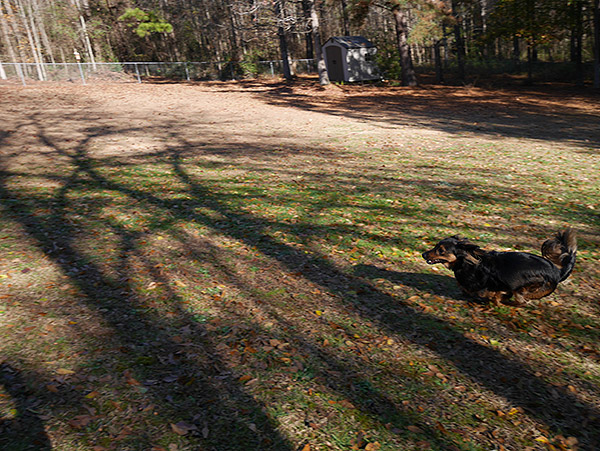 |
Not critically sharp, as Jack the Dog was running very quickly (and the shutter speed was a little too slow), but the AF on the GM1 did a great job. There's also a bit of rolling shutter, so beware with fast panning shots! (16mm, f/3.9, 1/640s, ISO 200) |
Fast AF. Manufacturers, please take note: This is how you do AF on mirrorless cameras -- it's amazing! The autofocus system on the GM1 was brought over from the GX7, and it's quite impressive. The AF feels near-instantaneous on all but the lowest-contrast subjects. Half-press after half-press of the shutter button is followed by a quick little beep, signifying confirmed focus. I found the performance to be great for both still and fast-moving subjects. Now, I didn't go out and attempt to shoot sports or birds-in-flight, for which a dedicated Phase-Detect AF system on a DSLR would be preferable, but for a fast-moving kid, or a dog running around in the backyard in my case, the GM1 did a great job.
 |
Pinpoint AF. (32mm, f/6.3, 1/250s, ISO 200) |
I am also a big fan of the GM1's Pinpoint AF mode, which lets you autofocus on a very precise point. I found this great for shooting macro-ish photos or other subjects where I wanted to make sure I nailed the focus (i.e. flowers). The GM1 gives you a full-screen magnified view around the AF point for easy confirmation that your subject is indeed in focus. (As an aside, I really love the dedicated control dial shortcut (press left on the 4-way dial) to access the different AF point modes. I found this very handy when going back and forth between shooting various types of subjects.)
 |
The color rendition on the GM1 was also very pleasing at default settings. (32mm, f/5.6, 1/640s, ISO 200) |
Get a grip. Now for a few negatives, unfortunately, and they start with the grip attachment. ("But wait, didn't you say that you loved the grip earlier?") For the ergonomic benefit, the grip is a very nice addition, but there are two big issues: when the grip is attached, you not only lose your tripod mounting socket, but the plate also completely covers the battery and SD card door. This means that you have to unscrew the plate completely to change the battery and/or memory card. Now, if you're out for a day of shooting and don't use up a full battery charge or fill up a memory card, then this is less of a problem, but given that these smaller cameras have smaller batteries, they tend to eat through a full charge more often. And if you're out shooting for a long time, chances are you'll need to change the battery. If I was out for a long hike or any other kind of traveling where I'd be away from a charger, I'd want to bring along at lea
st one extra battery. Having to remove the grip plate is just an extra hassle. However, given the svelte body-matching design of the plate, I don't see how Panasonic could have avoided this, but nevertheless I felt it was worth mentioning.
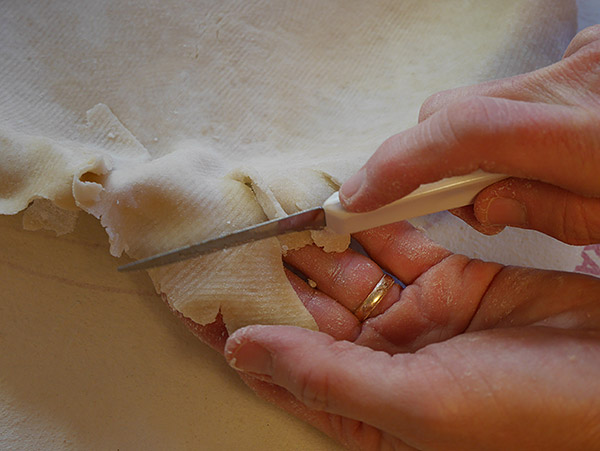 |
(25mm, f/5.1, 1/60s, ISO 640) |
Sensitive to the touch. The second little "gripe" with the GM1 that I ran into quite a bit was with the 4-way control dial on the rear of the camera. It doesn't take a lot of effort to press the buttons and given that the dial's edge is also used to scroll for various adjustments, like aperture and shutter speed, for example, I found myself accidentally pressing the buttons when I simply wanted to quickly adjust an exposure setting or magnify an image in playback mode. Instead, an accidental press activated a menu and I subsequently started scrolling through other settings that I never intended to change. Overall, a minor issue again, but one with which I got a bit annoyed.
The Panasonic GM1 also features a touchscreen, which in some cases can be quite useful, particularly with the extra, customizable Function (Fn) Buttons along the right edge of the screen (those are awesome!). However, I found the touchscreen was quite sensitive, and when you enable the touchscreen, Touch AF gets enabled by default as well. I liked Touch AF for the most part as it allowed very fast adjustments to the focus point for quicker compositions, but I would often accidentally touch the screen between shots, either with the edge of my thumb or edge of my palm, and unintentionally change the AF point. Thankfully, you can disable Touch AF while leaving the "Touch Tab" enabled so you still have access to the on-screen Fn buttons, which is excellent -- a nice middle ground.
 |
(32mm, f/5.6, 1/1000s, ISO 200) |
Macro-ish. I noted above that I love the Pinpoint AF mode on the GM1 for fast and easy critical focus on small subjects. Naturally, this would be excellent for close-up, macro-type shots but, unfortunately, I found the close focusing distance of the GM1-specific kit lens, the Panasonic 12-32mm f/3.5-5.6, to be a bit too far with too little telephoto zoom to really take close-up shots. This is a pretty minor gripe, like most of my issues with this camera seem to be, but I constantly found myself framing shots of close up subjects only to presented with a little red AF box telling me that AF was not possible. Frustrating.
Overall, though, my first experience with the Panasonic GM1 has been overwhelmingly positive. This tiny, practically-pocketable Micro Four Thirds camera is a standout piece of photographic equipment. It's big on image quality, AF and speed, but not on size, weight or bulk. I'm looking forward to more!
Stay tuned for Part II of my Panasonic GM1 Shooter's Report Blog (including additional shots taken with some crazy-good lenses). In the meantime, head over to the GM1 Gallery page for a closer look at the first batch of sample images taken with the kit lens. Also, visit the Panasonic GM1 review page and join in on the conversation with the comments at the bottom of the page to discuss this new camera and ask us questions!
-----------------------------------------------------------------------------------------------------
FEATURE: Anonymous Photographs�the Treasures in the Attic
-------------
by Steve Meltzer
Would you believe that there might be gold in those old silver photo prints tucked away in dusty family albums or stashed in half-decayed cartons in junkshops? Might some�old photo of your Uncle Harry pay for that faux-antique Nikon Df you�ve been lusting after?
In the last decade, anonymous photos � pictures taken by amateurs and �unknowns� � have become an increasingly valuable part of the fine art photography market, selling for thousands of dollars. One such example is a collection of mug shots from the San Francisco Police Department, Their value was estimated at around $3,000, but they actually sold for $31,200. Richard B. Woodward writes in Art+Auction:
��the area of the market showing the most robust growth in the midrange may be the broad field of vernacular photography. This includes anonymous pictures that provoke historical curiosity�� wrote Richard B. Woodward, in Art+Auction.
How does one justify these prices? Speaking of the high-end of the fine art photo market, gallery owner Mich�le Chomette explained that for her, pricing is determined by several elements: size, print quality, condition, number of known copies, and the photographer�s fame, adding:
�If (the photo) is important for the history of art and important in the career of the photographer.�For me, this is the key to everything.�
But �unknown� photographs are often small and their condition and print quality may not be perfect. The number of copies is unknowable and the photographer�s fame nonexistent. What�s going on?
Hans Kraus, a specialist in first-class 19th-century photography notes of high-end work from the period, �If it�s a compelling image and print, a name doesn�t really matter. Most daguerreotypes have always been sold that way. One is more likely to know the subject than the photographer.� The appeal of the subject and an element of historical interest are clearly important elements: both hold true of the San Francisco mug shots.
 |
The trend extends across the pond as well. As Francis Cheval of the Mus�e Ni�pce notes ��there are unknowns in all the big American museums now. The market�s moved in on the trend.� The Art Institute of Chicago featured an exhibition called �The Three Graces� which focused on photographs of trios of women, all by unknown photographers. The MoMA in New York City recently celebrated the donation of 500 unknown photographs with a major exhibition. Over one-third of the photos at the Fraenkel Gallery�s exhibition, �The Unphotographable,� were by unknown photographers.
 |
At the recent Paris Photo exposition, both ends of the market were on display. Among the dozens of exhibits, workshops and the general brouhaha, art galleries of all stripes sold hundreds of prints. While the high-end galleries with rooms filled with the stars of photography held some appeal, to me, the most interesting images were the work of anonymous and unknown photographers. One example is a 1909 5x7� photo of a little girl holding a snake in her lap, which sold for some amount more than 4,500 Euros, roughly US$ 5,800(1).
This photo is offered for sale by the gallery Lumi�re des Roses, owned by Philippe and Marion Jacquier. The Jacquiers are major players in the niche world of unknown photography and have witnessed the rising tide of enthusiasm for the work. The couple began their careers as gallerists in 1989 when Philippe discovered the work of his great-grandfather, Gabriel Veyre. Veyre was a cameraman for the Lumi�re Brothers studios and later the official photographer for the Sultan of Morocco. So captivated were Philippe and Marion with Veyre�s photographs that they began to exhibit the work.
 |
With a love of the strange as their guide, they eventually opened their own gallery in 2004 in an old carpentry shop in the town of Montreuil in Normandy, naming it after an unfinished film by Veyre. There was no mold to copy, so the couple simply followed their hearts. Lumi�re des Roses is a warm space, with walls covered with their treasured unknown images and shelves filled with ancient photo books and old cameras.
 |
In 2005 they held their first exhibition at the gallery. It sold out completely. The Jacquiers were on their way, but not before learning an important lesson. As Philippe observed, �There really was a market and our prices were too low.�
Later that year, they set up a booth at Paris Photo and on the first day sold eighteen of the fifty pictures they brought. Today their photos typically sell for between $1,000 and $5,000. The trend has not escaped high-art galleries. Francis Cheval laments, ��over the last five or six years the handsomest collections and albums have gotten expensive. The days of a great amateur print for $25 are gone.�
The Jacquiers have observed the same changes, but rely on their eyes and heart to lead them to long-lost treasures. While historical curiosity and an interesting subject might drive others� decisions, Philippe points to something deeper: for him, the photos must �have an aura, something that makes your heart beat faster. I buy photos for myself...because I love them.�
Maybe that�s the real secret of anonymous photography: the pleasure of finding these wonderful and strange images that reach across time. It is the excitement of the hunt, of rummaging through thousands of fading photographs in out-of-the-way crannies. The joy of discovery is magnified by the difficulty of the hunt.
And that might be the best part of unknown and vernacular photography. You may not find a priceless Ansel Adams print in your great grand uncle�s estate, but you just might find a photo that transcends the ordinary to radiate an aura of its own and reach out to you across time.
The images in this post are examples of Philippe�s wonderful and weird finds for Lumi�re des Roses. As you look at them keep in mind that many of these are simple drugstore prints smaller than 5x7 inches.
I have my own cherished unknown photograph produced around 1910. The �unknown� photographer was quite skillful, posing his subjects in three-quarter profile and shooting with a moderate telephoto lens to throw the caf� background out of focus.
The seated man presents himself as a bon vivant, a man who spends his days on the streets and in caf�s. Beside him, with a cocky stance and rakish spit curl, the waiter holds a large glass of wine at the ready.
I have no idea what value of this photograph might hold for the Jacquiers or �the market� but for me it is priceless: the seated rogue is my great-uncle and the waiter is his brother, my grandfather.
To see more images click here for the catalogs of Lumi�re des Roses from past Paris Photo shows:
http://www.youblisher.com/p/745059-Amateurs-anonymes-et-autres-images-5e-livraison/
http://www.youblisher.com/p/745072-Amateurs-anonymes-et-autres-images-6e-livraison/
http://www.youblisher.com/p/745056-Amateurs-anonymes-et-autres-images-8e-livraison/
(1) When asked for a specific figure, Philippe Jacquer declined to specify by how much more than his estimate the piece sold for.
Quotes from Philippe Jacquier, Francis Cheval and M�chelle Chomette first appeared in the following Le Monde articles:
http://www.lemonde.fr/culture/article/2013/11/14/photographies-a-tous-prix_3514089_3246.html
http://www.lemonde.fr/economie/article/2012/11/13/la-photographie-une-niche-florissante-sur-le-marche-de-l-art_1789734_3234.html
Reporting for this story was greatly informed by the following piece:
http://www.blouinartinfo.com/news/story/873445/zooming-in-on-the-trends-that-are-reshaping-the-market-for
-----------------------------------------------------------------------------------------------------
QUICK HITS: The most read, most compelling articles and reviews posted on IR recently
-----------------
Sony Q&A: What�s it take to change the game?
by Dave Etchells
A little over three years ago, there was a very visible shift in Sony's camera lineup, starting with the extremely well-received NEX-5. It turns out that one individual has been the driving force behind most of Sony's recent string of successes. And what a string they are -- the RX1, RX1R, RX100 and RX100 II compacts, the smartphone-extending QX series (which are wildly successful, just not so much among the dedicated photo community), the full-frame A7 and A7R mirrorless cameras, and the RX10 bridge camera.
The man behind all of these products is Kimio Maki, and he's the senior general manager of the Digital Imaging Business Group at Sony Corporation. Imaging Resource publisher Dave Etchells had a chance to sit down with him at the recent PDN PhotoPlus Expo, and it proved to be a very interesting interview indeed. Also taking part in the discussion was the ever-insightful Mark Weir, senior manager of technology and marketing at Sony Electronics Inc.
Together, Maki-san and Mark Weir gave us a great insight for how many of these products came to market, Sony's plan for its new full-frame FE lens line, the amazingly fine adjustments that are made to every RX1 or RX1R coming off the production line, how to get the best night videos out of a Sony RX10, and a whole lot more besides.
Jump on over to IR to read the full conversation between the two Sony managers and our publisher Dave Etchells.
-----------------------------------------------------------------------------------------------------
REVIEW: Sony HX300 Shooter's Report
by Mike Tomkins
|
The Sony RX10 is radically different from anything else on the market, but the pairing of a bridge camera design, a really great lens, and a larger-than-average sensor (by point-and-shoot camera standards, anyway) makes a whole lot of sense. |
The RX10 foreshadowed. When Sony announced its RX100 compact camera -- spiritual forebear of the RX10 -- in the middle of last year, I was thrilled -- and I was among the first to rush out, credit card in hand, to buy one for myself. The RX100 answered what seemed to me to be an obvious need for some middle ground between point-and-shoot cameras with the image quality you'd expect of a postage stamp-sized sensor, and mirrorless or SLR cameras with the bulk you'd expect from a large sensor.
My RX100 wasn't intended to replace the latter -- and you'll still have to work hard to pry my SLR from my cold, dead hands -- but its combination of significantly better image quality than the typical point-and-shoot and a much more compact body than an interchangeable-lens camera made huge sense to me. It's gone on to become my go-to camera, with my cellphone relegated to throw-away snapshots, and my SLR to carefully-planned, you'll-never-have-another-chance photo opportunities.
Why do I shoot with the RX100 so much? I have a four-year old son, and since his birth, travel -- whether it's halfway around the world, or just a few miles down the road -- has become much more of an event. My smartphone doesn't provide satisfactory image quality for my keeper shots, but at the same time, my heavy, bulky camera gear now invariably has to be left at home in favor of a more compact, portable option.
And doubly so when traveling overseas. Everything required to occupy (and care for) my son takes up most of the carry-on space, and I'm hesitant to send my expensive camera gear for a dropkick ride in the cargo hold. (I have family who worked in the airline industry, so I know very well just what my checked bags -- and their contents -- go through.)
Answer to the RX100's shortcomings. Much as I loved my RX100, though, I longed for a little more in the lens department. The Sony RX10 answers that need in spades, providing a spectacular lens that gives far more zoom reach and a bright f/2.8 constant aperture across the whole zoom range. When I first heard that the RX10 was on the way, I was both excited, and a little worried. Could Sony put the ball out of the park again? It seemed a tall order, and I was especially concerned about the RX10's size and price.
|
I shot the Cyber-shot RX10 alongside Sony's full-frame Alpha A7 and A7R for a week, on a press trip in Nashville, Tennessee, and I've used it for a couple of weeks since. It rapidly became my go-to camera, getting great shots I'd have missed while fumbling with lens changes if shooting with a DSLR or mirrorless camera. It's also smaller and less expensive than either, once you include similar optics. |
Would size be an issue? When I finally got my hands on the RX10 at a Sony press event in Nashville, Tennessee a couple of weeks later, my concerns about the size were redoubled, but only briefly. This is a much bigger camera than the RX100, certainly, and initially I found that a little off-putting. But then, I sat down and thought carefully about what I'd need to provide similar coverage and a constant f/2.8 maximum aperture with an interchangeable-lens camera.
The answer was pretty clear: I'd need at least a couple of lenses just to match the Sony RX10's coverage, and that's even before I considered trying to account for the bright, constant-aperture design of its lens. No matter which mirrorless mount I chose, I couldn't find one that could compete with the Sony RX10 on size and convenience, let alone would an SLR manage to do so.
|
I had high hopes for the RX10's image quality, having seen what the RX100 II -- with which it shares an image sensor -- is capable of. It didn't disappoint, turning in great results in all manner of different shooting situations. |
The turn-to camera. Once I got out and started shooting with the RX10, my impression that its size wasn't really an issue was reinforced. For most of the next week, I shot the RX10 alongside Sony's full-frame A7 and A7R mirrorless cameras side-by-side, and quickly found it becoming my favorite of the trio. I've since shot the RX10 by itself for a couple more weeks, and my love for it has only grown.
Incidentally, my rapidly-forming positive opinion of the RX10 was mirrored by what I heard from more than a few of my fellow journalists at Sony's press event. Sure, the larger sensors of the other cameras were nice, but there was definitely something to be said for having plenty of zoom reach -- not to mention some handy macro performance -- on tap, without having to constantly switch lenses back and forth. And the RX10's huge, crisp viewfinder was inviting indeed.
The image quality of the RX10, also, was more than sufficient for the majority of my photos. And even if I'm not really a movie guy, per se, it didn't hurt that the RX10 had great video chops as well.
The RX10 in-hand. But I'm getting ahead of myself. Let's return, for a moment, to how the RX10 handles.
Not surprisingly, given its greater size than my RX100, the Sony RX10 is pretty comfortable in-hand. Its large lens coupled with a relatively narrow grip meant that it wasn't terribly conducive to single-handed shooting -- the center of gravity is just too far from the grip for that -- but shooting two-handed was a delight. And with this style of camera, with zoom / focus and aperture rings around the lens barrel, I'd really want to shoot two-handed anyway. Occasional shots single-handed were no problem, certainly.
Tilting display. The tilting LCD display -- not a feature of my RX100 -- was great for shooting over my head, or low to the ground. It's a shame that it doesn't help out with portrait-orientation shots, though, and for that reason I would have preferred a side-mounted tilt-swivel screen, even if it cost a little more.
|
With default settings, colors were a little muted compared to typical point-and-shoot cameras, but I think the Sony RX10's target customer will likely prefer this to blown-out, garish colors. (And not only is there a lot of scope for tuning this to your taste in camera -- you can also shoot raw for total control.) |
Gorgeous viewfinder. When I wasn't framing from a challenging angle, I shot almost exclusively with the electronic viewfinder, which is very inviting indeed. It's not quite as high-res as that in the Alpha 7, but it's certainly more than sufficient in terms of sharpness and resolution, and it's sharp right out into the corners, as well.
Perhaps more importantly, it compares well even to my APS-C SLR, with a large, bright view and relatively minimal lag. Add in the benefits of being able to see info overlays, exposure, white balance, and even menus without taking my eye from the viewfinder, and even I -- someone who has long favored a prism-based TTL viewfinder -- am pretty much sold on the merits of the EVF.
And for bonus points, it projects a good way from the rear of the camera, so I don't feel I have to smoosh my nose against the screen to see anything.
|
With a smaller sensor than a DSLR and most-all mirrorless cameras, the Sony RX10 doesn't provide quite as much scope for shallow depth-of-field effects, but it also outperforms its bridge camera competitors with their smaller sensors handily. (And the bokeh is buttery-smooth.) |
Split personality zoom. Initially, I found the presence of two zoom controls -- the ring around the lens, and the rocker around the shutter button -- a little confusing. I quickly realized the reason for this, however: there's no dedicated manual focus ring, and so the zoom ring takes over this action when manual focus is enabled. That means a backup control is needed for the zoom, and so the rocker makes perfect sense.
There's not really room to comfortably accommodate another ring around the lens, and I don't think I'd want to sacrifice the aperture ring to gain a dedicated manual focus ring, as I control aperture manually much more than I focus manually.
Lens rings. Both rings are fly-by-wire types, and while I'd have preferred to have had a direct, mechanical connection, they were reasonably responsive. The zoom ring allows very small, accurate adjustments -- much more so than I could achieve with its rocker control -- but I did find myself wishing the drive mechanism was faster, and could better keep up with swift turns of the ring. (There's a step zoom function, but this doesn't increase speed, just steps the zoom to certain predefined focal lengths instead of zooming smoothly.)
The aperture ring was interesting to me for another reason: the small switch on the base of the lens which is used to enable or disable its click detents when the ring is turned. I'm not used to seeing controls placed on the underside of the lens barrel, and so it took me quite a while to find this. (In part, perhaps, because my RX100 has conditioned me to expect a smooth, clickless ring on RX-series cameras, as that on my RX10 was when I took it out of the box.) On the plus side, it's very unlikely to get accidentally bumped in this location.
Want to learn more about how the Sony RX10's built-in Carl Zeiss Vario-Tessar T* lens performs?
Click here to see our optical test results.
The optional click. I was thrilled once I finally found the switch, and was able to provide the click stops that my RX100 lacks. That little bit of tactile feedback makes a world of difference to me. But why, then, provide a click-free option? The answer is for video shooting, where the clicks wreck the audio portion of your movie, and make it hard not to shake the camera, to boot.
|
The RX10 also betters the typical bridge camera in terms of autofocus performance, responding much like a DSLR in this regard, even though it lacks a phase-detection sensor, and so has to rely on contrast-detection. And if you focus manually, shutter lag is actually less than most consumer DSLRs. |
Sadly, the stepless ring isn't accompanied by a stepless aperture -- peek in the front of the lens as you turn the ring, and you can still see that the aperture diaphragm still stops down in measured steps. The RX10 does do a reasonably good job of minimizing steps in brightness as you turn the ring, though, and for consumer use it's likely good enough to make playing with depth-of-field effects in video enjoyable.
Weather sealing. (!) Another nice surprise came when I took a closer look at the RX10's specifications. I hadn't realized this at launch, but the RX10 is environmentally sealed against dust and moisture, both on body seams and controls. We've not seen the degree of sealing stated in the US market, but overseas, the camera has been described as "splash and dustproof", suggesting that you shouldn't have to worry too much about a little light rain.
|
Burst performance was also quite good, although it slows significantly when raw files are needed, which describes most of my shooting. Still, it helped me get some nice shots of the extremely energetic and vivacious Leah Turner, an up-and-coming country singer, in the recording studio. |
Occasionally imperfect. There were only a few things I'd like to see changed about the Sony RX10's body. Perhaps the most significant of these was its upper rear dial, which is presented end-on, just barely protruding from the body. It's sandwiched top and bottom by slight bulges in the camera body, and this coupled with shallow knurling made it a bit awkward to turn with the pad of my thumb. The problem wasn't helped by the texturing on the camera body, which made it hard to differentiate whether or not the dial had even turned, unless I paid attention to the value for the setting I was adjusting in the display or viewfinder.
My impression of the upper dial, incidentally, wasn't helped by the fact that there was noticeable panel flex / creak around this point on the RX10's body. Albeit slight, it was the only place in which I noticed this, and it detracted a bit from what otherwise seemed like a pretty bullet-proof body.
A mind of its own? The lower dial, which sits side-on in a ring around the OK button, and doubles as a clickable four-way controller, was also the source of a little early frustration for another reason. This dial turns smoothly and easily, but perhaps a little too easily. It defaults to ISO sensitivity control in most modes, and it took me a little while to realize why the sensitivity kept changing on me seemingly at random, until I realized that my shirt buttons were turning the dial as the camera swung around my neck.
A quick visit to the menu system, and I simply disabled the dial altogether, but a slightly stronger click detent on the dial would have obviated the need to do so (and to lose a valuable external control in the process.)
Just a few times, I found that the exposure compensation dial -- which has a relatively mild detent -- had gotten turned by mistake, as well. It only happed perhaps three or four times in several weeks of shooting, though, so I don't consider it to be a huge issue. I just made sure to glance at exposure compensation a little more often than I normally would.
|
White balance was pretty good for the most part, although indoors and under street lighting it often tended a little on the warm side with a bit of a yellow cast. Of course, you can always shoot raw, and then fine-tune the color to your heart's content after the fact, without affecting image quality. |
Plenty to love. Otherwise, though, I really loved the body. Controls were in just the right places, and comfortably within reach -- mostly, without even needing to adjust my grip. The menu system was straightforward, and mostly pretty logical. The addition of hints as to why features are disabled when you can't access them (and how to fix the problem) is great, and helped me to become familiar with the camera much more quickly.
Bright, clear monitor. I've already mentioned the Sony RX10's viewfinder, but I should note that its main, tilting LCD is also great. It combines high resolution with Sony's WhiteMagic technology, and just like that on my RX100, it's very visible even on a bright, sunny day, with minimal glare and reflections. It's also surprisingly resistant to fingerprints and smudges, and those which manage to adhere are easily wiped off with a lens cloth.
|
|
Not only does it have a bright f/2.8 constant aperture; the Sony RX10's zoom lens also provides plenty of reach, from a generous wide angle to a healthy telephoto. I seldom felt limited by the zoom range, and that's definitely good news. Both shots here were taken moments apart from the exact same point. |
Handy status display. The top-deck LCD info display is a great touch, too. I actually didn't use it as often as I expected to, and as I would with my SLR cameras, perhaps because there's so much info already available through the electronic viewfinder. It was great for checking basic setup at a glance, though, and the backlight design is very thoughtful. (There's a small button next to the display, used to enable and disable the backlight, and its not-too-bright orange color didn't disturb my night vision as some info LCD backlights can.)
The menu delay. Performance was, for the most part, excellent. There was one thing, though, which I found quite frustrating. (And I'm probably more sensitive to it than most photographers, because I take lots of bracketed raw+JPEG sequences which take a while to write to the flash card.) For some reason, the Sony RX10's menu system takes a second or two to come back to life after each burst of shots. More frustratingly, when it does finally appear, quite a few menu options are grayed out for a further second or two. (And there seems to be no rhyme or reason to which these grayed-out items are.)
Just how fast is the Sony RX10? Find out by clicking here to see our full battery
of rigorous, objective speed and operation tests conducted in the IR Lab.
|
I enjoyed shooting with Sony's full-frame Alpha A7 and A7R, but for my money the DSC-RX10 was even more fun, and much more approachable. Pros and serious enthusiasts will want the Alphas' full-frame sensor, but for consumers and size-conscious enthusiasts, a more portable camera+lens package like the RX10 makes a lot more sense than an interchangeable-lens camera. |
It strikes me that the menu system likely takes very little processor time to render and display, and that the same is likely true of changing an individual setting. The fact that you have to wait around for this to happen can make the camera feel sluggish when it really isn't, and I'd like to see Sony address this with a firmware update. Simply allowing all settings to be accessed while your images write to the flash card would let the photographer get on with the job of setting up for their next shot while they wait for the buffer to clear, and reinforce the impression of a high-performance device.
Otherwise, a swift performer. And that, if you ignore this menu system quirk, is how the camera largely feels in other respects. It starts up reasonably swiftly, considering that the lens must be extended an inch or so at power-on. Autofocus is swift and reliable, and worked confidently for me even under relatively dim street lighting on a dark night. (In fact, in terms of AF performance, I'd describe the Sony RX10 as SLR-like, which is impressive for a contrast-detect based camera. And burst performance is reasonable, too. In fact, if you're willing to lock focus from the first frame, you'll get a full ten frames per second in JPEG mode, although for me with my raw shooting, that fell to a bit over six fps.
On-camera flash. I don't use on-camera flash particularly often, as I find it harsh and unflattering, and prefer to use an external strobe or a higher ISO sensitivity for a more natural look. Sadly, I didn't have access to any of Sony's external strobes in my time with the RX10, and so didn't get to give off-camera flash a spin. The internal strobe certainly seemed up to the job, though, with pretty good range for its size, and throttling down well for macro subjects. I was concerned about the lens shading the strobe, but in actual fact this wasn't a concern until I got very close to my subject at wide-angle. Shooting at telephoto, I could frame almost as tightly (and with less distortion, to boot), yet the flash wasn't blocked by the lens even at its closest focus.
Fun with macros. And man, could I ever focus close with the Sony RX10. I was surprised by just how small an area was covered, especially at wide-angle if I didn't need artificial light on my subject, and didn't mind a bit of distortion. OK, many point-and-shoot cameras will manage a smaller macro, but they don't typically do so without needing to enable a macro mode. And with an SLR or mirrorless camera, you'd be looking at buying a macro lens to get closer than the RX10 will. With the RX10, though, you can frame an area of around three by two inches at wide angle straight out of the box, and not a whole lot larger at telephoto.
|
The RX10's images can be supremely sharp at lower sensitivities, such as this ISO 125 shot.
|
Great image quality. Overall, I was quite impressed with the RX10's lens and sensor pairing, especially in Sony's corrected JPEG output. Not surprisingly, uncorrected raw files show quite a bit of distortion and chromatic aberration, but out-of-camera JPEGs at lower ISOs had lots of sharp detail, and controlled the lens defects well. Color was pleasing, and white balance mostly accurate, although it tended a bit warm under indoor lighting, and struggled to compensate for street lighting, with quite a yellow cast. (But then, that's not exactly rare.)
View the IR Lab's in-depth Sony RX10 image quality test results by clicking here, but be sure to read further on to see side-by-side comparisons of the RX10 against its top competitors.
Noise levels. Compared to my RX100, noise at higher ISO sensitivities seemed -- not stronger, but less even and blotchier. Partly, it was likely down to differences in noise processing, but interestingly our lab testing also showed slightly higher noise in raw files compared to the follow-up RX100 II, with which we understand the RX10 to share its image sensor.
|
Even at the highest sensitivity, there's still a fair bit of detail left, although a good bit has been lost to noise and noise processing. Images can get a bit blotchy at ISO 3200 and beyond, though.
|
The difference isn't night and day, though, and the bright f/2.8 maximum aperture across the zoom range means you'll be needing those higher ISO sensitivities less than you would with many bridge cameras in the first place. Not to mention that, while larger SLRs and mirrorless cameras with their larger sensors will better the RX10 in terms of noise performance, its bridge camera competitors all have much smaller sensors, and the RX10 will simply trounce them in terms of noise performance. (Of course, it also costs a lot more than the typical bridge camera.)
|
Here's another shot at the highest sensitivity. It has a bit of a watercolor-esque look viewed 1:1, but again, there's quite a bit of detail left. The metering system nailed the exposure, producing a result much as I remembered the scene. |
Surprisingly good video camera. I'm not much of a movie shooter myself, as I don't have the mindset for video editing, and simple single-perspective video clips aren't the most exciting. Still, the Sony RX10 has some seriously impressive video chops. We'll have a video page shortly explaining this in more detail, but in a nutshell there are a few things to know: It's significantly less prone to moire and false color than most other video-capable still cameras, even interchangeable-lens models that cost a lot more. The RX10 also offers a built-in ND filter to help you tame too-fast shutter speeds, external mic and headphone connectivity, levels display and fine-grained levels control, and the (optionally) smooth-turning aperture ring I mentioned earlier. Throw in full-time autofocus to keep the consumer videographers happy, and the RX10 makes for quite a video camera.
But what about the price? Does it merit its pricetag? If you ask me, the answer is yes, and if I had the money available right now I'd probably pick one up myself. (Unfortunately, I don't -- but chances are I'll be buying an RX10 of my own, sooner or later.)
There really is nothing comparable to it on the market, much as was the case with the RX100 last year, and it offers a heck of a proposition for anybody wanting great image quality without an interchangeable lens mount. (And realistically, that's a lot of people -- many photographers will buy an ILC and then seldom if ever change the lens anyway -- in which case, why not go with a great fixed lens, rather than a kit lens that's almost an afterthought?)
I've had a huge amount of fun shooting with the Sony RX10 -- more so than any fixed-lens camera I've shot with in years. That, to me, says it all.
|
The Sony RX10 is among the rare ranks of cameras that really hurt to give back when the review's over. It's a safe bet that, sooner or later, I'll be picking one up for myself -- I enjoyed shooting with it too much and got too many great photos for that not to be the case.
|
What's our final verdict on the Sony RX10? Read our detailed RX10 review online to find out! http://www.imaging-resource.com/camera-reviews/sony/rx10/
-----------------------------------------------------------------------------------------------------
REVIEW: Nikon D610 Shooter's Report
by William Brawley
 |
The Nikon D610's 24.3 megapixel, FX-format, full-frame sensor allows not only for easier ultra-wide shots like this, but also for shots that have a higher dynamic range than those from most crop-sensor cameras. |
The Nikon D610 is an interesting addition to the company's DSLR lineup, in that it's not really a new camera per se, but rather just an incremental update to the D600. The primary difference between the new and old models is the D610's new shutter mechanism, plus a couple minor tweaks.
Dust-and-oil problem cleared up. The unofficial reason for the updated model is to fix a particularly troublesome problem that plagued many D600 owners since the introduction of that camera back in 2012 -- dust and oil spots on the sensor, caused by the shutter mechanism. Nikon won't say specifically that the D610 fixes this issue, or that the D600 problem was the impetus for the update, but thankfully the issue does appear to be resolved with the D610's redesigned shutter.

Our colleague and friend Roger Cicala at LensRentals did a thorough evaluation of the Nikon D610 to see if the dust-and-oil issue persisted with the new model. He and his team tested 25 sample units of the D610, checking them three separate times, including after they came back from rental, and found no evidence of the problem.
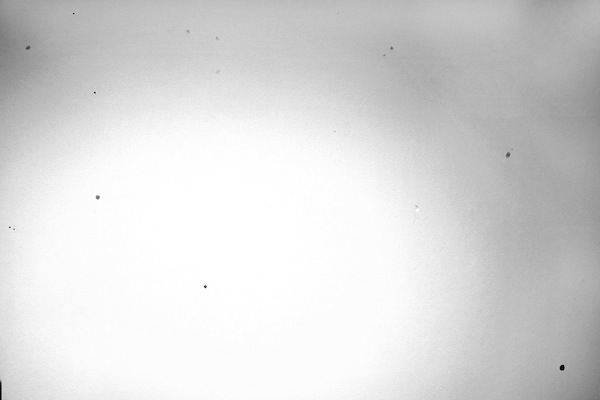 |
This composite image from LensRentals shows the accumulated dust found on sensors from 25 different Nikon D610 bodies, after they've been subjected to in-house testing. As Roger Cicala notes, this is a slightly better result than most cameras his company tests. Consider the D600's oil-and-dust problem resolved! |
That's great news for those who wanted a D600, but were dissuaded when the reports of dust-and-oil splatter cropped up late last year. It's perhaps a little disappointing for those who already bought the D600; Nikon has to this point offered no trade-in opportunities for D600 owners. Still, user feedback suggests that the problem resolves itself within the first few thousand shots anyway, so perhaps a trade-in would be a bit much to expect.
 |
The Nikon D610's full-frame sensor allows for shallow depth of field, even when shooting with the kit lens. |
So, now that the sensor dust and oil issue is out of the way, what else is new with this camera, and what's it like to shoot with? The primary new features of the Nikon D610 are a Quiet Continuous shutter release mode, and a half frame-per-second increase in capture rate when using the Continuous High burst mode. Both come thanks to the new shutter mechanism. Our lab testing confirms the increase in performance, incidentally -- more on that in a moment.
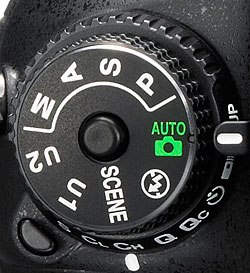 Quiet Continuous mode. The Quiet Continuous (Qc) mode is a nice addition, and, in fact, quite a rare one at that. The D610 is the first Nikon DSLR to feature it. I thought the Nikon D7100 that I reviewed a while back included it as well, but I remembered incorrectly. (It just has the single-shot quiet mode.) The Qc mode setting has been wedged into the D610's drive mode dial between the standard Quiet Shutter Release mode and the Self-Timer mode. Qc mode allows for a 3fps continuous shooting speed, but with a much quieter shutter actuation sound.
Interestingly, I found the default, single-shot shutter release sound of the D610 to be fairly soft and quiet already, even when not in Quiet mode. It's much quieter than my Canon 5D Mark II and 7D bodies, or the 5D Mark III and D800E we have here at Imaging Resource headquarters. Be that as it may, the single-shot Quiet Shutter release and Quiet Continuous modes really make the shutter sound on the D610 even quieter. I can see either of these near-silent shutter modes being very useful to certain kinds of photographers, especially photojournalists, wedding or street shooters, or even wildlife and nature enthusiasts who don't want to scare off the critters they're photographing or simply want to be more conscientious and respectful of their surroundings. I could definitely imagine a photojournalist at a press conference or event, for example, using either of these quiet shutter release modes to help avoid getting in the way of the proceedings.

The single-shot quiet shutter release mode lets you choose when to release and lower the mirror rather than the standard "raise mirror, open-and-close-shutter, lower mirror" process that a DSLR normally goes through. With the D610, you simply keep the shutter release button pressed to keep the mirror raised. (The shutter will already have closed according to your exposure settings) You're free to lower the shutter at an opportune moment by releasing the button. In the new Qc mode, the D610 does reduce the top continuous shooting speed from 6fps to 3fps, but it allows for a better chance to quietly capture fleeting moments -- or those easily frightened animals -- than do the standard continuous modes.

Continuous high burst mode. The D610 improves upon the burst shooting speed of the D600, and Nikon notes that it allows for six frames per second, up from the 5.5fps of the D600. I found the claim to be quite accurate and our lab results confirmed this. In our tests, the D610 achieved just over 5.9 frames per second for best quality JPEG, raw and raw+JPEG frames, versus around 5.4fps for the D600. Buffer depths remained essentially the same, despite the slight increase in burst rate.
Although still not a speed demon -- professional sports photographers will surely look elsewhere for their high-speed cameras -- the D610 is quite capable, especially considering the resolution and sensor size. For the majority of users, a solid 6fps is nice and quick for lots of fast action scenarios, like sports or wildlife.
Auto white balance. The last minor change to the D610 is a tweak to its Auto white balance algorithms. The adjustments supposedly help create a more natural look, especially when shooting under artificial light sources.
| Auto White Balance in Incandescent Lighting Compared |
 |
 |
Nikon D610 |
Nikon D600 |
In our Indoor Portrait scene shown above, the Nikon D610's Auto white balance setting performed similarly to that of the D600 in incandescent lighting, producing overly warm results, though skin tones looked slightly improved and greens were rendered a little warmer. It's possible the improvements were targeted at other types of artificial lighting, but for accurate white balance under tungsten lighting, I still recommend using Manual white balance. Of course, if you shoot RAW, then adjusting white balance to your tastes in post-processing takes just a few, simple clicks.
Shooting experience. Overall, I found the Nikon D610 to be a pleasure to use. The large, FX-format, full-frame sensor with 24.3 megapixel resolution allows for fantastic fine detail, great noise control at higher ISOs, and lets you really go wide with ultra-wide angle lenses. It's perfect for landscape photography or low-light shooting.
See our head-to-head image quality comparison between the Nikon D610 and D600,
which proves that they're virtually identical.
I reviewed the Nikon D7100 a while back, and this camera feels very similar; it's almost like Nikon shoved a full-frame sensor inside that camera's body. Nevertheless, it does feel a bit heftier than the D7100, which is to be expected. The ergonomics of the D610 feel comfortable and well thought out, although it still has the same quirky problem that I first experienced with the D7100 -- the eyepiece is almost flush with the back of the camera. Since I'm left-eye dominant, the flatter eyepiece makes my thumb press up against my forehead when using back-button focusing. Furthermore, the lack of a dedicated AF-ON button (hey, the D800 has one!) also seems like a minor annoyance. They're just that, though: relatively minor annoyances.
On all other fronts, the D610 carries over the same design and advanced features of the D600 like dual, locking mode dials, dual Secure Digital card slots, Full HD video at multiple frame rates (no 1080/60p though, just 720/60p), full-time AF for videos, and a headphone jack.

Who should buy it? If you're a Nikon user who's ready to make the jump to a full-frame camera, and you don't need all the bells and whistles and 36 megapixel images of the D800, the D610 is a fantastic, feature-packed camera that produces amazing image quality at an affordable price. Those who are brand-agnostic should also consider the D610, or its close competitor, the Canon 6D.
If you're an existing D600 owner, however, I'm not quite sure the D610 is worth the switch. Unless you're particularly fed up with the sensor dust-and-oil problems (and many accounts indicate that these go away after a certain number of shutter actuations -- not a great excuse, but still), or you're really excited about 3fps quiet continuous shutter mode and an extra 0.5fps from the high-speed continuous burst shooting mode, the D610 is not hugely different from the D600.
 |
The D610's images look highly detailed, with nice, rich colors at the default color and picture settings. |
Bottom line. The D610 is, for all intents and purposes, the same camera as the Nikon D600. Instead of repeating the information and analysis here, please see our in-depth Nikon D600 review for a full recounting of our experiences with that camera. Simply ignore our dust-and-oil commentary, and remember that the D610 can shot slightly faster and more quietly. Despite its flaws, when we reviewed it last year we liked the D600's image quality and performance -- as well as its excellent value proposition -- enough that we still gave it a Dave's Pick. Suffice to say, the Nikon D610 gets an even higher recommendation from us. It's truly a great camera and a tremendous value, perfect for the advanced enthusiast longing to step up to a f
ull-frame model.
What's our final verdict on the Nikon D610? Read our detailed D610 review online to find out! http://www.imaging-resource.com/PRODS/nikon-d610/nikon-d610A.HTM
-----------------------------------------------------------------------------------------------------
Nikon DF Lab Notes and First Shots: Impressive image quality, quirky looks and handling
by Dave Pardue and Luke Smith
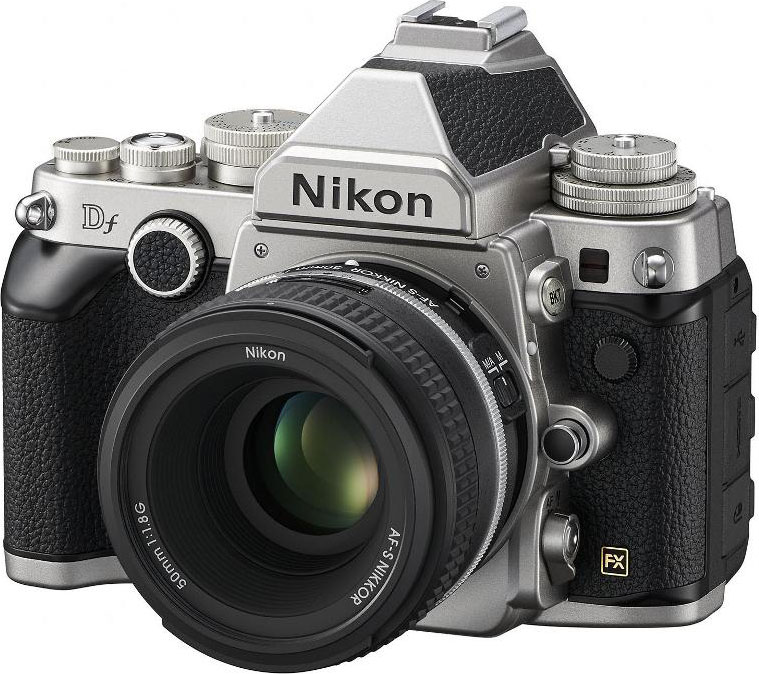
Once we received our test sample of the Nikon DF, the first one of us to actually shoot with it was our senior lab technician Luke Smith. Luke has shot pretty much every significant camera that's been announced in the last ten years or so, so we thought his insights on the Nikon DF would be interesting to our readers. Herewith, then, some handling notes from Labmaster Luke:
"The Nikon DF focuses nicely, the exposure is consistent and it's reasonably quiet to operate. I have yet to do side-by-side comparisons, but to my eye the images look quite like the Nikon D4, as expected."
"The control dials work well for the most part, especially the ones with the center depress button, but there are two that don't work so well for my tastes. The ISO dial is a bear and takes two hands, one to press the lock release and one to turn the dial, which is really frustrating. And the Shutter Speed dial is pointless to me, because in order to achieve precise speeds you have to turn the dial close to where you want it, and then use the common digital scroll wheel to get it precise. But if you just set the dial to 1/3 increments then you can do this anyway, and I am guessing most people will set it there and never touch it again, using the more common and easy rear dial instead."
"The top shutter speed is only 1/4000s, where the D4 will go to 1/8000s. Because of this and the minimum aperture being f/22, I was unable to complete our full series of ISO tests, because as I approached the top ISO (a whopping 204,800, as also found on the D4), I was unable to achieve optimal exposure. This is only a small gripe that will not affect many shots, but it is still worth noting."
"The viewfinder is very nice, big like a film SLR, but the overall look of the camera to me is not my taste. The 'silver' edition of the camera that we're testing seems to use several different shades of plating for the exterior, making the body somewhat cheap looking compared to most pro cameras. And the shiny black front caps on several of the front buttons don't help in this respect."
"Overall, the Nikon DF is an interesting camera which takes nice images, but has some rather oddball quirks."
We're also happy to report we've got an early production unit in the IR Lab, and we've posted First Shots -- a series of Still Life* test images -- for your pixel-peeping pleasure.
Check out our Nikon DF First Shots for yourself. And be sure to pit these test images side-by-side with those from the D4, D800 -- or any other camera we've ever tested -- via our Comparometer� image quality comparison tool.
For more information about the DSLR's new features and specs, read our hands-on preview of the Nikon DF.
* Use our Still Life target images to look for detail (tone-on-tone, fine, highlights, shadows), as well as noise suppression, white balance, color accuracy and color shape retention.
-----------------------------------------------------------------------------------------------------
NEW ON THE SITE
-----------------------
At http://www.imaging-resource.com/new-on-ir you can keep track of what's new on our main site. Among the highlights since the last issue:
- Review: Fuji X100S review: A powerful photographic tool for the advanced�but patient�shooter (http://www.imaging-resource.com/news/2013/11/26/fuji-x100s-review-powerful-photographic-tool-for-advanced-patient-shooter)
- Nature Photography: Once a decade event fills the Grand Canyon with breathtaking fog (http://www.imaging-resource.com/news/2013/12/02/once-a-decade-event-fills-the-grand-canyon-with-breathtaking-fog)
- Lens Review: Nikon 58mm f/1.4G lens review: A pricey new prime for your kit? (http://www.imaging-resource.com/news/2013/12/04/nikon-58mm-f-1.4g-lens-review-a-pricey-new-prime-for-your-kit)
- Amazing Skills: You�ll never believe how this portrait of actor Morgan Freeman was made! (http://www.imaging-resource.com/news/2013/12/03/youll-never-believe-how-this-portrait-of-actor-morgan-freeman-was-made)
- Real-Life Sample Images: Sony A3000 gallery photos posted: Can this low-cost champ deliver high-end DSLR results? (http://www.imaging-resource.com/news/2013/12/02/sony-a3000-gallery-images-posted-can-low-cost-champ-deliver-high-end-dslr)
----------------------------------------------------------------------------------------------------
NEXT ISSUE
---------------
We'll see you next on December 13, with a regularly scheduled edition (and lots more news and analysis to share)!
SIGNOFF
-----------
That's it for now, but between issues visit our site for the latest news, reviews, or to have your questions answered in our free discussion forum. Here are the links to our most popular pages:
Newsletter Archive: http://www.imaging-resource.com/cgi-bin/dada-nltr/mail.cgi/archive/irnews
Daily News: http://www.imaging-resource.com/news
SLR Gear: http://www.slrgear.com
New on Site: http://www.imaging-resource.com/new-on-ir
Review Index: http://www.imaging-resource.com/camera-reviews
IR Photo Contest: http://www.dailydigitalphoto.com
Google + http://plus.google.com/+imagingresource
Facebook: http://www.facebook.com/imagingresource
Twitter: http://www.twitter.com/IR_Lab
Happy snapping!
Dave Etchells & the IR Editorial Team
editor@imaging-resource.com
|





























